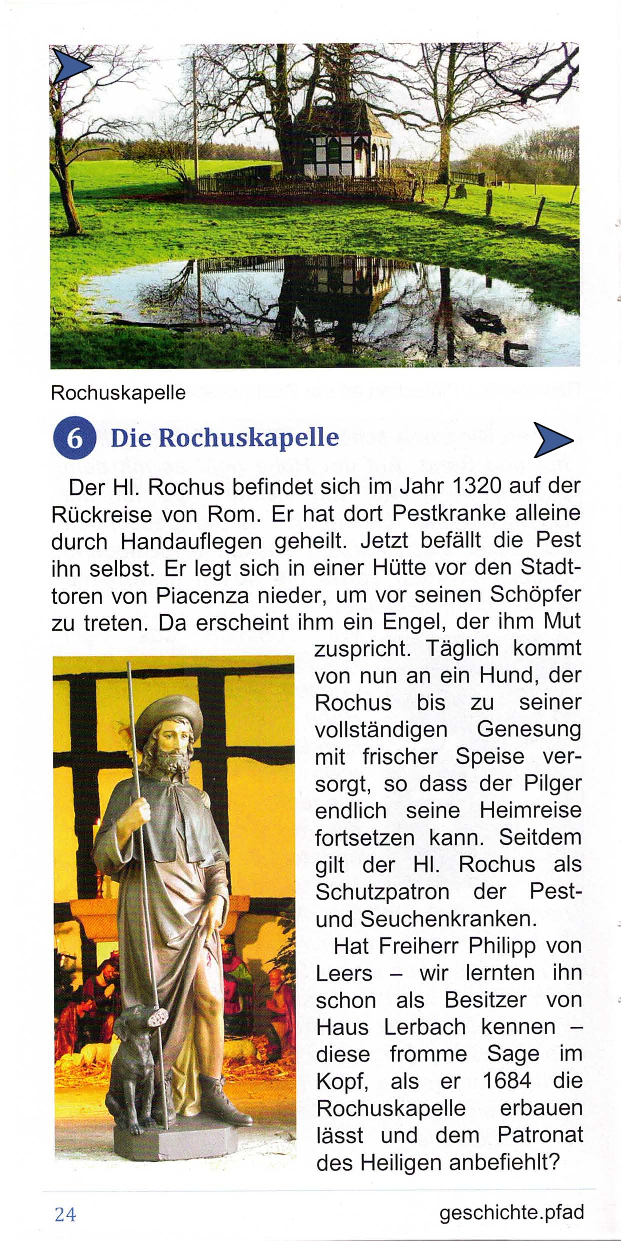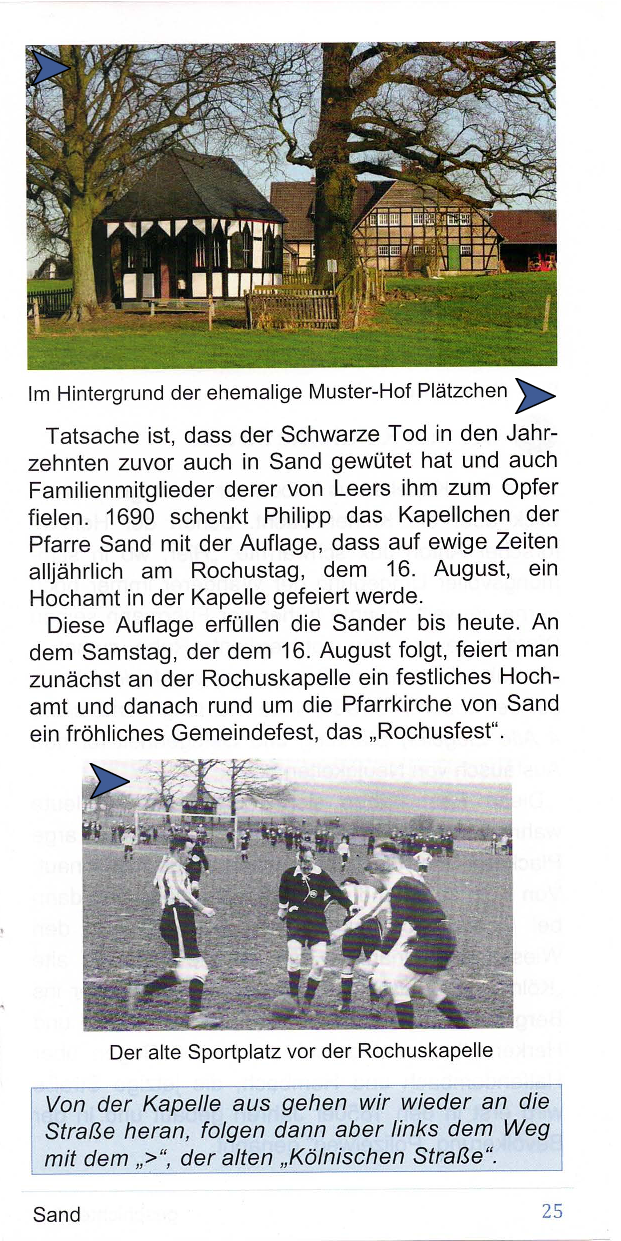geschichte.pfad
Historischer Wanderweg Sand
von Manfred Dasbach und Udo Harler
Kapitel 6
Die Rochuskapelle
Seiten 24 - 25
Download der kompletten Broschüre
"geschichte.pfad Historischer Wanderweg Sand"
mit englischen Texten

|
In 1320 Saint Rochus was on his way back from Rome. There he healed people stricken with the bubonic plague by simply putting his hands on them. He then fell victim to the disease himself. He lay down in a little hut in front of the town gates of Piacenza so as to present himself before his Creator. Suddenly an angel appeared to instil new courage into him. From then on a dog provided him with fresh food every day until he completely overcame the disease and was able to continue his pilgrimage back home. From those days onwards, Saint Rochus is looked upon as the patron of all those suffering from the plague and other endemic diseases. It may well be that Philipp von Leers – we already know him as the owner of Lerbach Manor – had in mind this pious legend when – in 1684 – he had the Rochus Chapel built and commended to the patronage of the Saint. |

|
|
nach oben
| vorheriges Kapitel | Übersichtskarte | nächstes Kapitel |
Mit freundlicher Unterstützung durch
